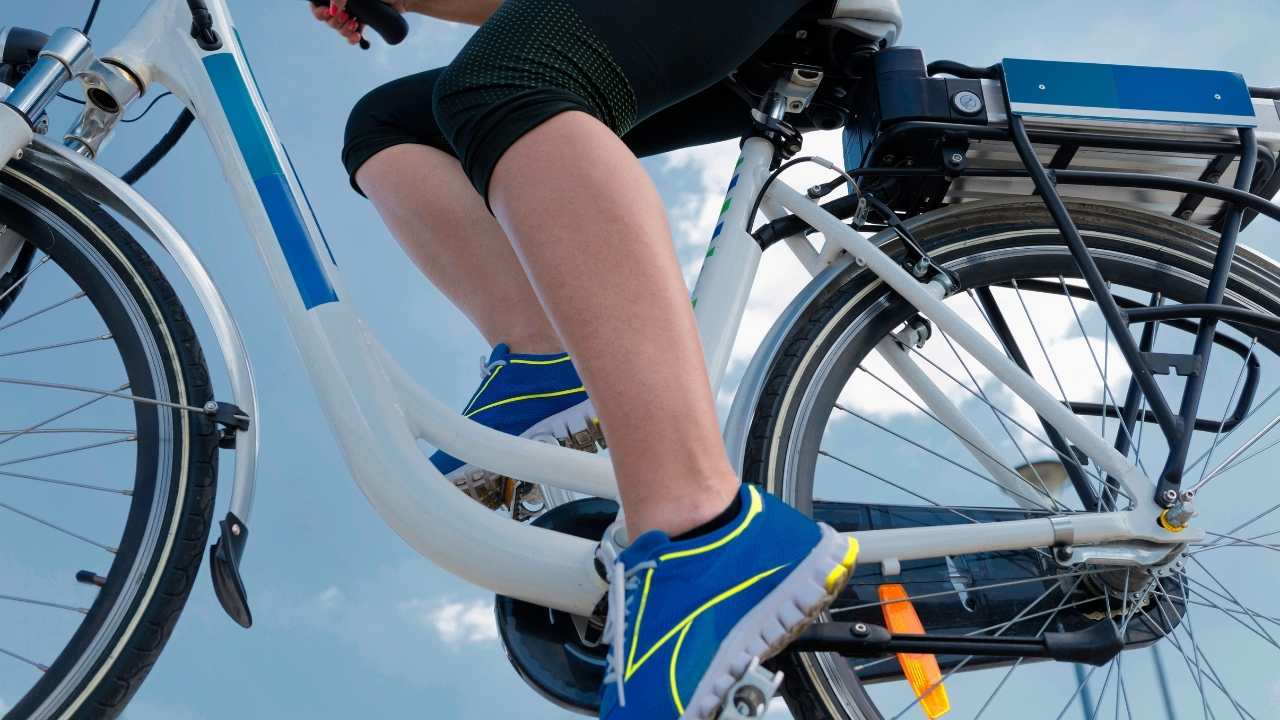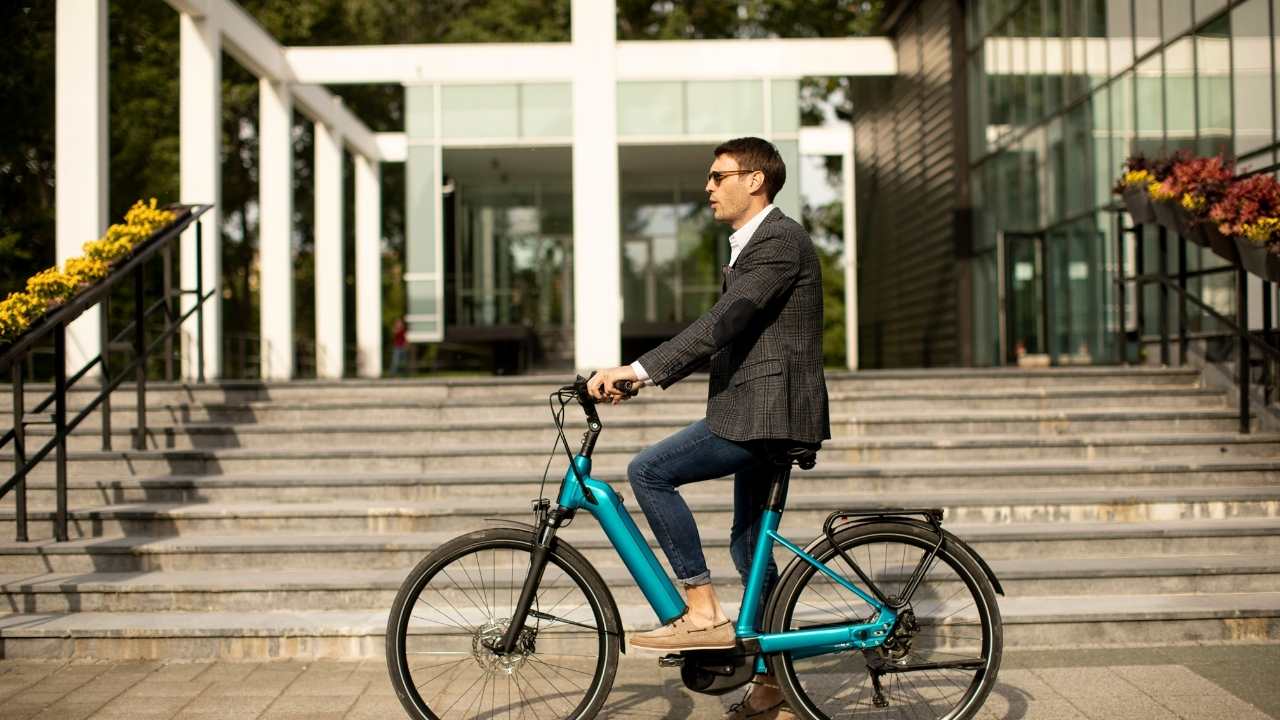
Federal regulations for e-bikes establish a power limit of 750 watts, with speed classifications for pedal-assist up to 20 mph (Class 1), throttle propulsion (Class 2), and pedal-assist up to 28 mph (Class 3). Manufacturers must adhere to CPSC safety standards, label bikes properly, and comply with brake and lighting requirements. Riders should yield to pedestrians on trails, wear helmets meeting federal safety standards, and use proper lighting. Following these regulations guarantees safety, environmental protection, and responsible riding. Additional insights await those curious about the evolving landscape of e-bike regulations.
Definition of E-Bikes by Federal Law
By federal law, e-bikes are defined as electric bicycles that are equipped with an electric motor with a maximum power output not exceeding 750 watts. These regulations aim to guarantee the safety of riders and others sharing the road.
E-bikes offer a convenient and eco-friendly mode of transportation, but it's essential to operate them responsibly. Understanding the legal definition helps riders select appropriate models and informs them of where these vehicles can be used.
Adhering to these standards not only promotes safety but also contributes to a harmonious environment for all road users. Remember, respecting these laws not only protects you but also fosters a positive image of e-bike riders in the community.
Classification of E-Bikes by Speed
How are e-bikes classified based on their speed capabilities according to federal regulations?
E-bikes are categorized into three main classes based on their speed capabilities. Class 1 e-bikes have a pedal-assist feature that provides assistance up to 20 mph. Class 2 e-bikes also have a maximum assisted speed of 20 mph but are equipped with a throttle to propel the bike without pedaling. Class 3 e-bikes, on the other hand, offer assistance up to 28 mph but require the rider to pedal to engage the motor.

Understanding these classifications is essential for both riders and manufacturers to make sure that e-bikes are used safely and responsibly on roads and bike paths while adhering to federal regulations.
Requirements for E-Bike Manufacturers
When considering the manufacturing process of e-bikes, adherence to federal regulations is essential for ensuring compliance with safety standards and operational requirements. E-bike manufacturers must meet specific criteria set by the Consumer Product Safety Commission (CPSC) to guarantee the safety of their products.
These requirements include proper labeling with important information such as maximum speed, motor wattage, and battery voltage. Additionally, manufacturers must make sure that e-bikes meet safety standards for brakes, lighting, and overall construction.
Access to Trails and Public Lands
When it pertains to accessing trails and public lands with e-bikes, there are important points to think about.
Trail usage guidelines help guarantee a harmonious experience for all users, while land access restrictions aim to protect sensitive ecosystems.
Adherence to safety regulations is vital to promote responsible e-biking practices and improve overall trail enjoyment.
Trail Usage Guidelines
Access to trails and public lands for e-bikes is subject to specific guidelines set forth by federal regulations. These guidelines aim to guarantee the safety of all trail users and protect the environment.

When using trails, e-bike riders should always yield to pedestrians and other non-motorized users. It is essential to stay on designated trails and avoid creating new paths that could harm the natural habitat. Speed limits may be in place to prevent accidents and maintain a peaceful coexistence among trail users.
Additionally, riders should be mindful of their surroundings, especially when approaching blind corners or steep descents. By following these trail guidelines, e-bike riders can enjoy their outdoor adventures responsibly while respecting the rights of others.
Land Access Restrictions
In order to guarantee the proper management of e-bike use on trails and public lands, it is vital to adhere to the specified land access restrictions mandated by federal regulations. These restrictions are in place to safeguard the safety of riders, protect the environment, and maintain the integrity of shared spaces.
It is important for e-bike riders to respect designated trails and public lands where e-bike use is permitted. By following these access restrictions, riders can help preserve natural habitats, prevent trail erosion, and promote harmonious coexistence with other trail users.
Always consult local authorities or land managers to stay informed about where e-bike use is allowed and any specific rules that need to be followed. Respecting these restrictions not only ensures a positive e-biking experience but also contributes to the sustainability of outdoor recreational areas.
Safety Regulations Compliance
Adhering to safety regulations for e-bike use on trails and public lands is vital for ensuring the well-being of riders and the preservation of natural environments.
When accessing trails and public lands with your e-bike, it's important to comply with speed limits, yield to pedestrians, and respect designated areas for e-bike use.

Additionally, always wear a helmet, use proper lighting, and be mindful of your surroundings to prevent accidents and promote a safe riding experience.
By following these safety regulations, you not only protect yourself but also contribute to the sustainability of the trails and public lands for future generations to enjoy.
Safety Standards for E-Bike Riders
In ensuring safety on e-bikes, several important points must be considered.
From mandatory helmet requirements to specific lighting and visibility rules, riders need to adhere to these standards for their well-being and the safety of others.
Understanding and following these guidelines can significantly reduce the risk of accidents and promote a safer riding experience for all e-bike enthusiasts.
Helmet Requirements for E-Bikes
Ensuring the safety of e-bike riders, helmet requirements are an essential component of federal regulations for e-bikes. Wearing a helmet while riding an e-bike is vital to protect against head injuries in case of accidents.
The U.S. Department of Transportation mandates that all e-bike riders wear helmets that meet specific safety standards to guarantee maximum protection. These helmets are designed to absorb impact and reduce the risk of head trauma.

Additionally, wearing a helmet not only improves safety but also sets a good example for other riders, promoting a culture of responsible riding.
Lighting and Visibility Rules
Implementing proper lighting and visibility regulations is vital for enhancing the safety of leading ebike for city dwellers e-bike riders on the road. Adequate lighting ensures that riders are visible to other road users, especially during low-light conditions or inclement weather.
Federal regulations mandate that e-bikes must be equipped with a white front light visible from at least 500 feet and a red rear reflector or light visible from 600 feet. Additionally, riders are encouraged to wear reflective clothing and accessories to improve their visibility further.
Future Outlook for E-Bike Regulations
What potential changes can be expected in the future regarding regulations for e-bikes?
As the popularity of e-bikes continues to rise, lawmakers are considering updates to guarantee the safety of riders and others sharing the road. One key aspect that may see changes is the classification system for e-bikes, distinguishing between different types based on speed and power. This refinement can help enforce appropriate regulations for each category, promoting safer riding practices.
Additionally, there may be increased emphasis on mandatory safety features such as lights, reflectors, and speed limiters to boost visibility and control.
Frequently Asked Questions
Can E-Bikes Be Ridden in Bike Lanes?
E-bikes can typically be ridden in bike lanes, but it is essential to check local regulations. Safety is paramount; riders should be aware of speed limits, yield to pedestrians, and signal appropriately to guarantee a smooth and secure experience.

Are E-Bike Riders Required to Wear Helmets?
In the interest of safety, e-bike riders are required to wear helmets in many jurisdictions. This precaution helps protect riders in the event of accidents and reduces the risk of head injuries.
Do E-Bikes Require Registration or Insurance?
In the interest of public safety and compliance with transportation norms, it is advisable for e-bike owners to be aware of potential requirements for registration and insurance, which may vary based on federal regulations.
Are E-Bikes Allowed on Public Transportation?
E-bikes are typically allowed on public transportation, but policies may vary by location. It is important to check with the specific transit agency for rules and guidelines regarding the transportation of e-bikes on their services.
How Can E-Bike Riders Signal Their Turns?
E-bike riders can signal their turns by using hand signals or electronic turn signals. Hand signals are essential for indicating changes in direction and enhancing safety for the rider and other road users.